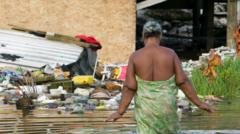The ongoing snakebite crisis in Africa leaves countless individuals, particularly the rural poor, vulnerable to deadly encounters with venomous snakes, highlighting urgent healthcare access challenges.
Venomous Encounters: Understanding the Snakebite Crisis in Africa

Venomous Encounters: Understanding the Snakebite Crisis in Africa
Millions at risk as venomous snakes claim lives and limbs in rural communities.
In Africa, the threat of venomous snakes winds its way through homes and fields, taking a devastating toll each year. Millions suffer from bites, with official estimates citing around five million cases annually. The consequences are dire: approximately 120,000 fatalities occur, and approximately 400,000 people face amputations as a result of their injuries.
Recent stories from Kenya illustrate the heartbreaking impact of these incidents. Eleven-year-old Beatrice Ndanu Munyoki was attacked by a snake while tending to her family's goats. After enduring a lengthy journey for treatment that highlighted the lack of available medical resources, she ultimately lost her finger due to the severity of her snakebite.
This crisis is exacerbated by factors such as habitat encroachment driven by deforestation, human population growth, and the far-reaching implications of climate change. In countries like Kenya, Brazil, and India, snakes share diminishing resources with increasing human populations, creating a drawn-out battle for survival.
Urgent action is needed to improve access to antivenom and medical care in rural areas. The snakebite epidemic serves as a stark reminder of the profound intersections between wildlife, humanity, and health—highlighting the vulnerability of some of the world's most impoverished communities.
Recent stories from Kenya illustrate the heartbreaking impact of these incidents. Eleven-year-old Beatrice Ndanu Munyoki was attacked by a snake while tending to her family's goats. After enduring a lengthy journey for treatment that highlighted the lack of available medical resources, she ultimately lost her finger due to the severity of her snakebite.
This crisis is exacerbated by factors such as habitat encroachment driven by deforestation, human population growth, and the far-reaching implications of climate change. In countries like Kenya, Brazil, and India, snakes share diminishing resources with increasing human populations, creating a drawn-out battle for survival.
Urgent action is needed to improve access to antivenom and medical care in rural areas. The snakebite epidemic serves as a stark reminder of the profound intersections between wildlife, humanity, and health—highlighting the vulnerability of some of the world's most impoverished communities.




















